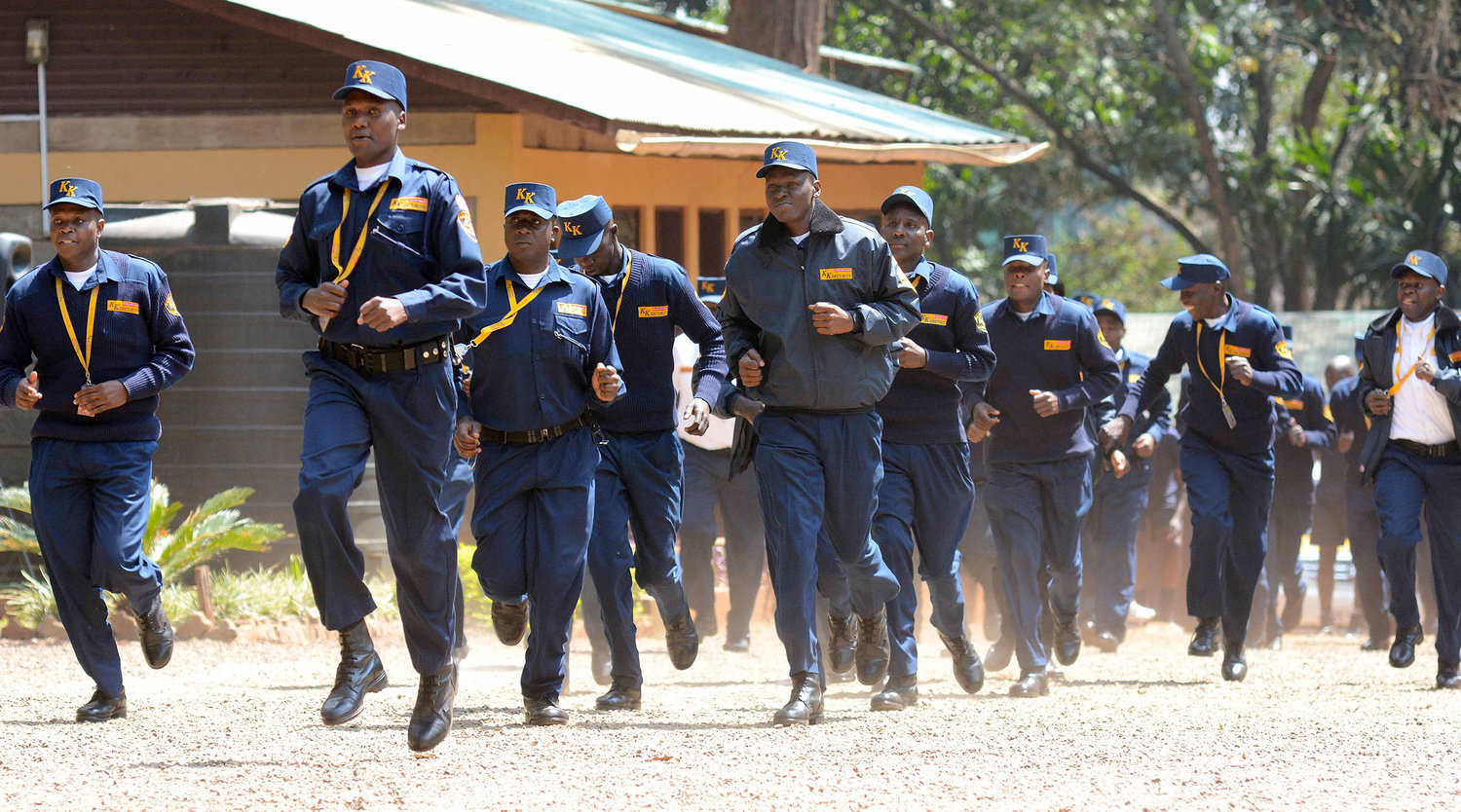Corporate Security Introduced: Securing Your Possessions and Credibility
Corporate Security Introduced: Securing Your Possessions and Credibility
Blog Article
From Cybersecurity to Physical Procedures: Reinforcing Company Security in an Altering Globe
In today's rapidly progressing digital landscape, the significance of company protection can not be overstated. As cyber dangers become significantly innovative and prevalent, companies should surpass standard cybersecurity procedures to guard their procedures and possessions - corporate security. This is where the assimilation of physical safety actions becomes vital. By incorporating the strengths of both cybersecurity and physical security, business can produce a detailed protection technique that attends to the diverse variety of threats they deal with. In this discussion, we will certainly explore the altering risk landscape, the need to integrate cybersecurity and physical safety, the application of multi-factor authentication measures, the importance of employee understanding and training, and the adaptation of protection actions for remote labor forces. By taking a look at these crucial locations, we will acquire important insights right into exactly how companies can strengthen their business safety and security in an ever-changing world.
Recognizing the Altering Threat Landscape
The progressing nature of the contemporary world necessitates a comprehensive understanding of the altering risk landscape for efficient corporate safety. In today's interconnected and digital age, risks to company protection have actually become much more intricate and innovative. As innovation breakthroughs and businesses become significantly reliant on electronic infrastructure, the possibility for cyberattacks, information violations, and other protection breaches has actually substantially enhanced. It is essential for organizations to remain informed and adapt their safety determines to address these developing threats.
One secret facet of understanding the transforming threat landscape is acknowledging the different sorts of hazards that organizations face. Cybercriminals are constantly establishing new methods to exploit vulnerabilities in computer systems and networks. These dangers can range from malware and ransomware attacks to phishing frauds and social engineering techniques. In addition, physical dangers such as burglary, criminal damage, and business reconnaissance remain common worries for services.
Monitoring and evaluating the hazard landscape is important in order to recognize possible risks and vulnerabilities. This involves remaining upgraded on the most recent cybersecurity fads, evaluating threat knowledge reports, and performing normal risk analyses. By comprehending the altering risk landscape, organizations can proactively carry out proper safety steps to mitigate dangers and safeguard their properties, reputation, and stakeholders.
Integrating Cybersecurity and Physical Safety
Incorporating cybersecurity and physical safety is critical for comprehensive corporate protection in today's electronic and interconnected landscape. As companies increasingly depend on modern technology and interconnected systems, the limits between physical and cyber dangers are ending up being blurred. To properly safeguard versus these dangers, an all natural approach that integrates both cybersecurity and physical security actions is crucial.
Cybersecurity concentrates on shielding electronic properties, such as data, systems, and networks, from unauthorized access, disturbance, and burglary. Physical protection, on the various other hand, includes measures to protect physical assets, individuals, and facilities from risks and vulnerabilities. By integrating these two domain names, organizations can address susceptabilities and dangers from both physical and electronic angles, thus enhancing their overall protection position.
The assimilation of these two disciplines enables an extra comprehensive understanding of security risks and allows a unified feedback to events. For instance, physical accessibility controls can be boosted by incorporating them with cybersecurity procedures, such as two-factor verification or biometric recognition. Cybersecurity measures can be enhanced by physical security procedures, such as monitoring cameras, alarms, and protected access factors.

Executing Multi-Factor Verification Steps
As companies increasingly prioritize comprehensive security measures, one reliable strategy is the execution of multi-factor authentication measures. Multi-factor authentication (MFA) is a safety and security method that requires individuals to offer multiple kinds of identification to access a system or application. This strategy adds an extra layer of protection by integrating something the individual understands, such as a password, with something they have, like a safety and security or a finger print token.
By this content executing MFA, companies can substantially boost their safety posture - corporate security. Conventional password-based authentication has its limitations, as passwords can be conveniently jeopardized or neglected. MFA reduces these risks by adding an extra authentication variable, making it harder for unauthorized people to gain accessibility to delicate information
There are a number of types of multi-factor verification methods readily available, including biometric verification, SMS-based verification codes, and equipment tokens. Organizations require to evaluate their details demands and choose the most appropriate MFA remedy for their requirements.
Nonetheless, the execution of MFA should be thoroughly planned and performed. It is crucial to strike an equilibrium between safety and functionality to avoid user irritation and resistance. Organizations must likewise consider possible compatibility problems and provide ample training and assistance to make certain a smooth shift.
Enhancing Employee Recognition and Training
To reinforce corporate safety, companies have to focus on enhancing staff member understanding and training. Lots of security breaches happen due to human mistake or lack of awareness.
Effective employee awareness and training programs ought to cover a wide variety of subjects, including data security, phishing assaults, social engineering, password health, and physical safety and security procedures. These programs need to be customized to the particular requirements and duties of various employee duties within the organization. Normal training sessions, workshops, and simulations can aid workers establish the necessary abilities and expertise to determine and react to safety risks effectively.
Furthermore, companies ought to urge a society of safety understanding and give recurring updates and pointers to keep employees educated about the most recent risks and mitigation strategies. This can be see it here done through interior interaction networks, such as newsletters, intranet sites, and email campaigns. By promoting a security-conscious workforce, companies can significantly reduce the possibility of safety incidents and secure their important properties from unapproved accessibility or concession.

Adapting Safety Steps for Remote Labor Force
Adjusting business safety procedures to accommodate a remote workforce is essential in making sure the protection of delicate details and properties (corporate security). With the raising pattern of remote work, companies need to execute proper security measures to minimize the dangers associated with this brand-new method of functioning
One vital facet of adjusting safety and security procedures for remote work is developing safe interaction networks. Encrypted messaging systems and virtual exclusive networks (VPNs) can aid safeguard sensitive information and prevent unapproved access. In addition, organizations ought to implement the usage of strong passwords and multi-factor verification to enhance the safety and security of remote access.
Another important factor to consider is the execution of protected remote access services. This entails providing workers with protected accessibility to company sources and data via digital desktop facilities (VDI), remote desktop protocols (RDP), or cloud-based solutions. These modern technologies ensure that delicate info stays secured while making it possible for employees to execute their functions successfully.

Last but not least, comprehensive protection recognition training is critical for remote employees. Training sessions need to cover ideal practices for firmly accessing and taking care of sensitive information, recognizing and reporting phishing efforts, and preserving the general cybersecurity health.
Verdict
In final thought, as the danger landscape proceeds to evolve, it is important for organizations to visit homepage reinforce their safety gauges both in the cyber and physical domains. Incorporating cybersecurity and physical protection, executing multi-factor verification actions, and boosting employee recognition and training are important steps in the direction of attaining durable corporate security.
In this discussion, we will explore the changing hazard landscape, the need to incorporate cybersecurity and physical safety and security, the implementation of multi-factor authentication procedures, the significance of worker awareness and training, and the adjustment of safety and security actions for remote workforces. Cybersecurity measures can be matched by physical protection procedures, such as security video cameras, alarms, and protected gain access to points.
As organizations progressively prioritize comprehensive protection actions, one efficient approach is the implementation of multi-factor verification actions.In final thought, as the hazard landscape proceeds to advance, it is critical for organizations to reinforce their security determines both in the cyber and physical domains. Integrating cybersecurity and physical safety, executing multi-factor authentication measures, and enhancing employee understanding and training are vital steps in the direction of attaining robust business security.
Report this page